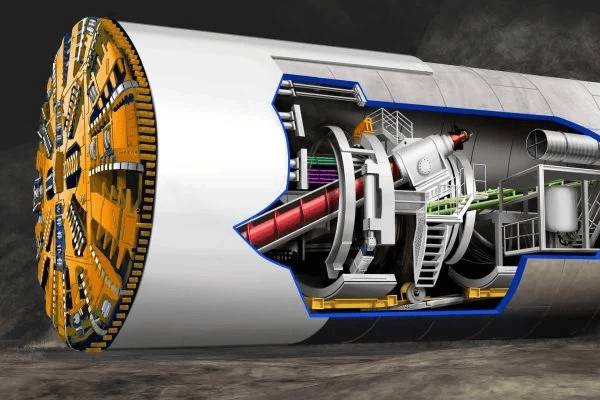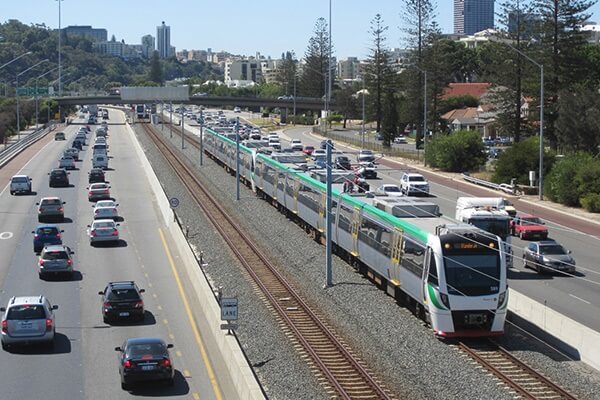 NCRTC installs India’s First “Solar on Track” in a Metro or RRTS System
NCRTC installs India’s First “Solar on Track” in a Metro or RRTS System Delhi Metro to expand 450 km network by 2027, Take 10.9 lakh Vehicles Off Roads Daily by 2031
Delhi Metro to expand 450 km network by 2027, Take 10.9 lakh Vehicles Off Roads Daily by 2031 Hitachi Rail bags Automatic Fare Collection System Contract for Bangalore Metro Phase 2
Hitachi Rail bags Automatic Fare Collection System Contract for Bangalore Metro Phase 2 Efkon India bags ₹164 crore contract for Electrical & Mechanical works of Kanpur Metro Line 2
Efkon India bags ₹164 crore contract for Electrical & Mechanical works of Kanpur Metro Line 2 Kochi Metro Pink Line likely to begin Operations by June 2026
Kochi Metro Pink Line likely to begin Operations by June 2026 Bhopal Metro Phase 1 Cost Escalates to ₹10,033 Crore — 43% Higher Than Original Estimate
Bhopal Metro Phase 1 Cost Escalates to ₹10,033 Crore — 43% Higher Than Original Estimate India to add over 300 Kilometres of New Metro and Regional Rail Network by 2026
India to add over 300 Kilometres of New Metro and Regional Rail Network by 2026 Maharashtra to launch Unified Metro Rail Authority for Mumbai Metropolitan Region
Maharashtra to launch Unified Metro Rail Authority for Mumbai Metropolitan Region India charts the future of Urban Transport at UMI 2025: Mobility as the Backbone of Development
India charts the future of Urban Transport at UMI 2025: Mobility as the Backbone of Development Herrenknecht to establish India's Largest TBM Manufacturing Facility in Chennai
Herrenknecht to establish India's Largest TBM Manufacturing Facility in Chennai
Indian Railways Financial Overview for FY 2024-25: Challenges, Growth and Opportunities

Indian Railways, the lifeblood of India's transportation sector, plays a pivotal role in the nation’s economy, both in terms of freight and passenger services. As the country aims to modernize and enhance its railway infrastructure, understanding the financial landscape of Indian Railways for FY25 is crucial. The allocated budget, revenue generation, expenditures, and the challenges the system faces reveal a complex yet optimistic picture for the railways sector in India.
Overview of Railway Budget and Expenditure for FY25
Indian Railways has received an allocation of ₹2.65 lakh crores for capital expenditure (CAPEX) in the financial year 2024-25 (FY25). By October end, the railways had already spent approximately 60% of this allocation, a positive sign of capital projects and modernization initiatives being on track. The money is primarily being used for enhancing infrastructure, procurement of rolling stock, and significant projects such as the Bullet Train project and Dedicated Freight Corridors (DFC).
Revenue Earnings Till October 2024
As of October 24, 2024, Indian Railways reported substantial earnings from both freight and passenger services. The total earnings amounted to:
- ₹1.02 lakh crores from freight services, marking a robust contribution to the overall revenue.
- ₹46,375 crores from passenger services, reflecting the growing demand for rail travel.
This marks a year-on-year growth of 6.1% compared to FY24, with expectations to reach:
- ₹80,000 crores from passenger services for FY25.
- ₹1.8 lakh crores from freight services by the end of the financial year.
These figures indicate that, despite the challenges faced by Indian Railways, there is a steady and gradual increase in earnings, especially in freight services.
Key Allocations for Major Projects
Indian Railways is investing heavily in modernization and capacity enhancement. Some of the key allocations in the FY25 budget include:
- ₹21,000 crores for the Bullet Train project, which aims to revolutionize high-speed rail travel in India.
- ₹8,155 crores for the Dedicated Freight Corridor (DFC) project, aimed at improving the movement of freight and decongesting traditional railway lines.
- ₹40,000+ crores for the procurement of rolling stock, including new coaches and locomotives, to enhance passenger and freight capacity.
These significant investments highlight Indian Railways' ambition to modernize its infrastructure, improve efficiency, and increase both passenger and freight capacity.
Passenger Traffic and Growth Projections
Indian Railways expects to carry 7.47 billion passengers in FY25, a 6% growth in passenger traffic from the previous year. This is a positive trend, but it is important to note that passenger traffic has not yet surpassed the pre-COVID levels of 8.44 billion passengers reached in FY19. Despite the growth in the number of passengers, the railways have yet to fully recover to pre-pandemic figures, indicating challenges in regaining passenger confidence and demand.
Both reserved and unreserved passenger segments have shown growth, with a 6% increase, but this growth is still short of addressing the increasing passenger demand, particularly during peak travel seasons.
Expenditure Breakdown Till October 2024
By the end of October, Indian Railways’ revenue expenditure stood at ₹1.35 lakh crores. Some of the major expenditures include:
- Staff salaries and allowances: ₹1.18 lakh crores are expected to be spent on salaries and allowances of railway employees.
- Pension liabilities: ₹65,000 crores will be allocated to meet pension obligations.
- Fuel costs: Approximately ₹11,000 crores for diesel procurement.
- Electricity: ₹24,000 crores to meet the electricity requirements for railway operations.
- Lease charges of IRFC: ₹22,000 crores will be spent towards lease charges of the Indian Railway Finance Corporation (IRFC) for financing the procurement of assets.
While these expenditures are essential for day-to-day operations, they reflect the significant financial burden of managing such a vast and complex transportation network. A key concern remains how to balance these recurring costs with the need for modernization and infrastructure development.
Challenges in Achieving Targets
While the growth in passenger and freight earnings is encouraging, some key areas require focused attention to meet the targets for FY25 and beyond. These challenges include:
1. Freight Growth:
Despite the railways' efforts, freight volumes are still below the desired targets. The Mission 3000 MT target set three years ago, aiming to increase freight volumes, remains elusive. The railways need to boost their focus on high-volume freight sectors like cement, aluminum, bauxite, and coal, which have not shown the expected increase in rail transport.
- Rail Coefficient: Efforts should be made to improve the rail coefficient (the percentage of goods moved by rail) for major industries and ports, ensuring that more freight is transported via rail.
2. Passenger Traffic Recovery:
Passenger traffic, while showing growth, is still below pre-pandemic levels. To address this:
- Increase Unreserved Accommodation: There is a need to increase the number of unreserved coaches on trains, especially during peak travel seasons. This can alleviate overcrowding and help meet the demand from casual travelers.
- Optimize Train Operations: The emphasis on running Vande Bharat trains, which occupy valuable track space while serving fewer passengers, should be reassessed. Conventional unreserved trains, which can accommodate a larger number of passengers, may be a more effective way to handle crowding, especially during festive seasons.
3. Freight Train Speeds:
The average speed of freight trains remains abysmally low, currently hovering below 25 km/h. This significantly impacts the efficiency of freight transport and limits the railways’ ability to meet freight targets. Identifying and addressing the underlying causes—whether infrastructural bottlenecks, outdated rolling stock, or operational inefficiencies—is critical to improving these speeds.
4. Dedicated Freight Corridor:
The Western Dedicated Freight Corridor (DFC), which aims to connect the northern and western regions to major ports like JNPT (Jawaharlal Nehru Port Trust), has faced delays. The completion of this key section is crucial for improving freight operations and boosting capacity. Expedited efforts to complete this project are essential to meet the freight demand and ensure efficient transportation of goods.
5. Training and Safety:
Indian Railways must continue to emphasize the training of staff, both departmental and contractor staff, as well as upgrading training infrastructure. While human error is often cited as the cause of accidents, enhancing staff training, especially in operations and safety protocols, can significantly reduce incidents and improve overall efficiency.
Conclusion: A Roadmap for the Future
Indian Railways’ financial outlook for FY25 shows both promise and challenges. While there is steady growth in both passenger and freight earnings, the sector faces a series of operational challenges, including delays in key projects, slow freight train speeds, and an inability to fully recover passenger traffic to pre-COVID levels.
To address these challenges, the railways must focus on optimizing train operations, improving freight efficiency, and completing critical infrastructure projects like the Dedicated Freight Corridors. Additionally, increasing unreserved accommodation on trains, enhancing safety training, and addressing human errors can help further boost the sector's performance.
By overcoming these hurdles, Indian Railways can continue to play a central role in India's economic growth, with enhanced efficiency, modernized infrastructure, and a focus on sustainability and innovation.







